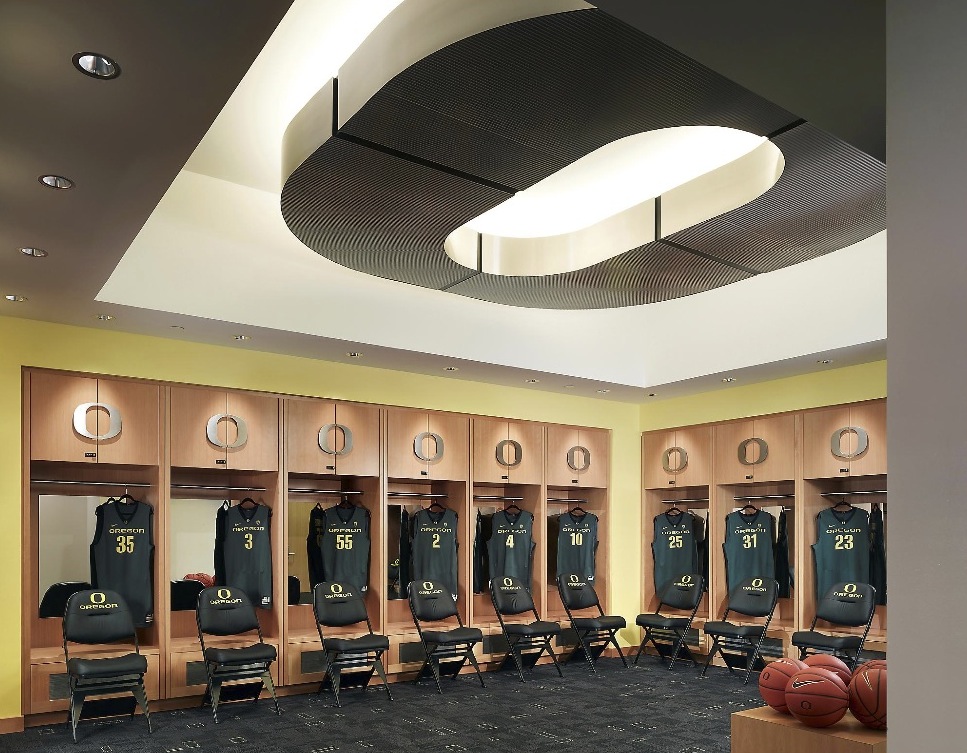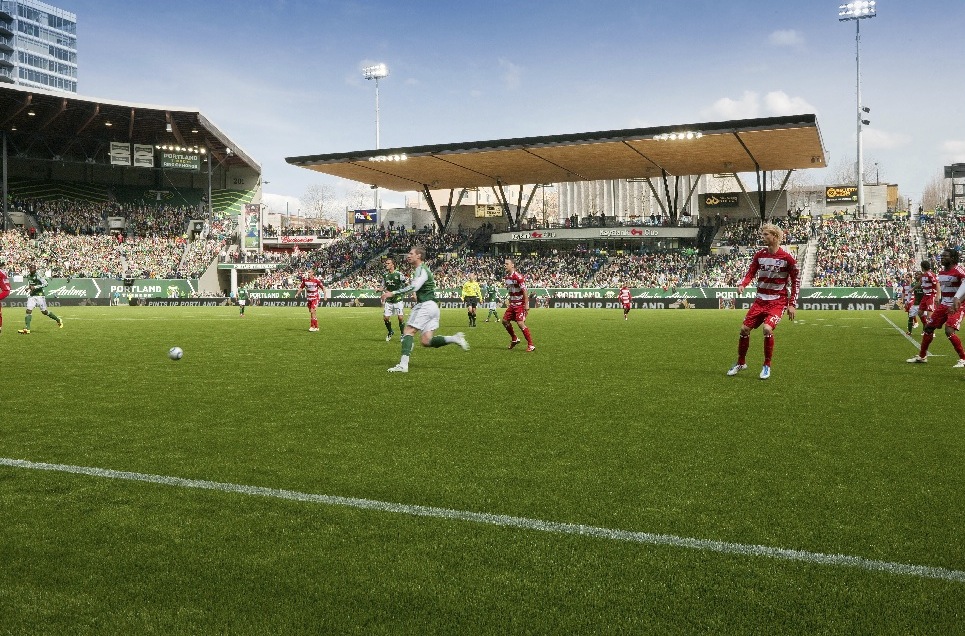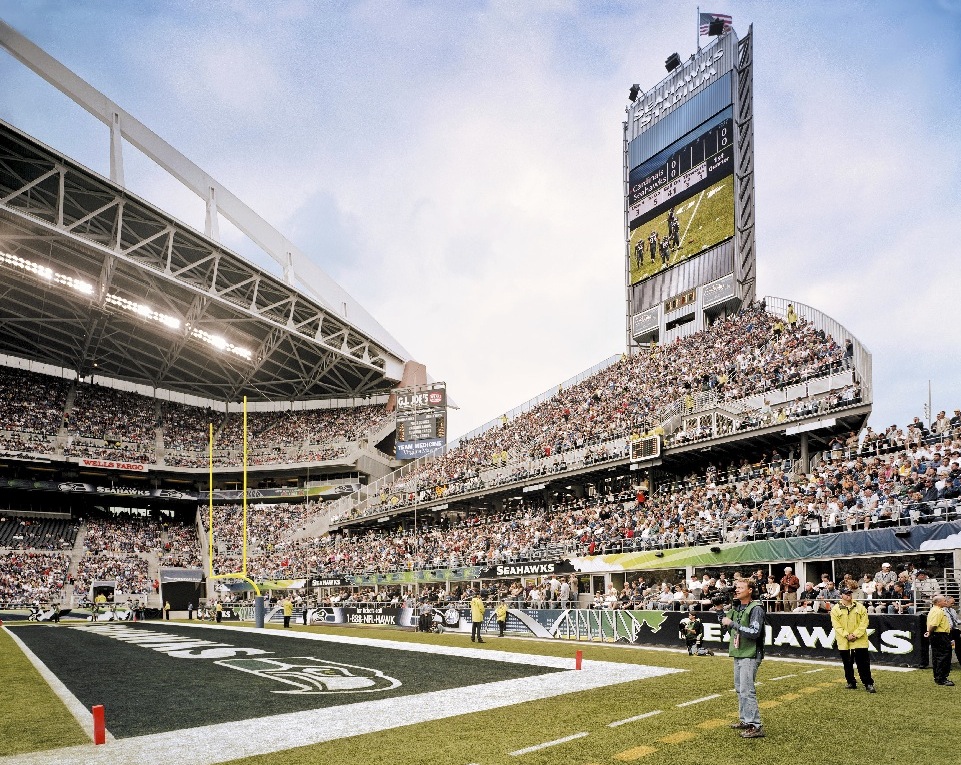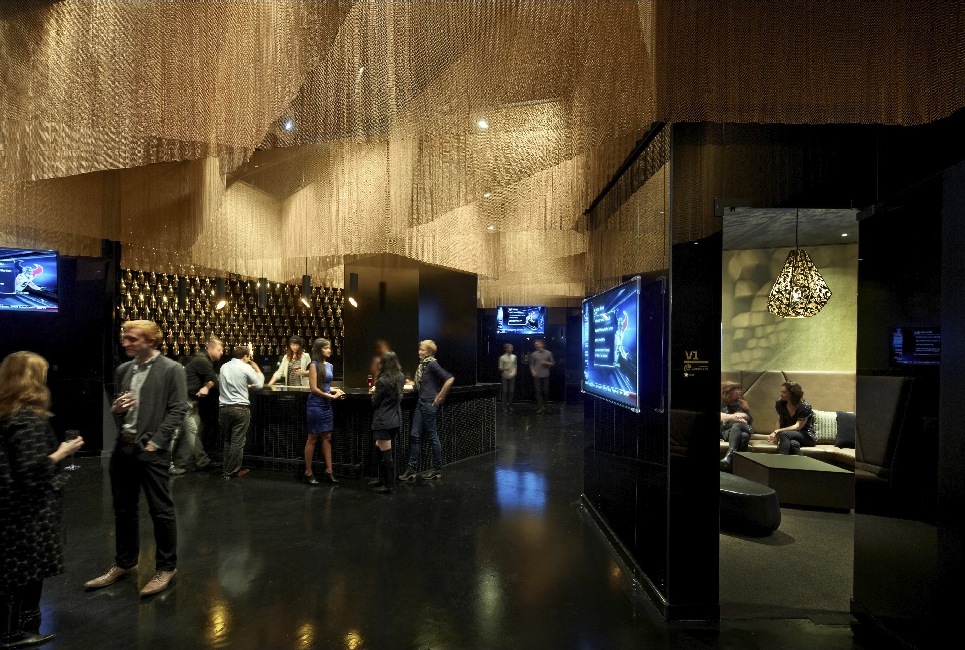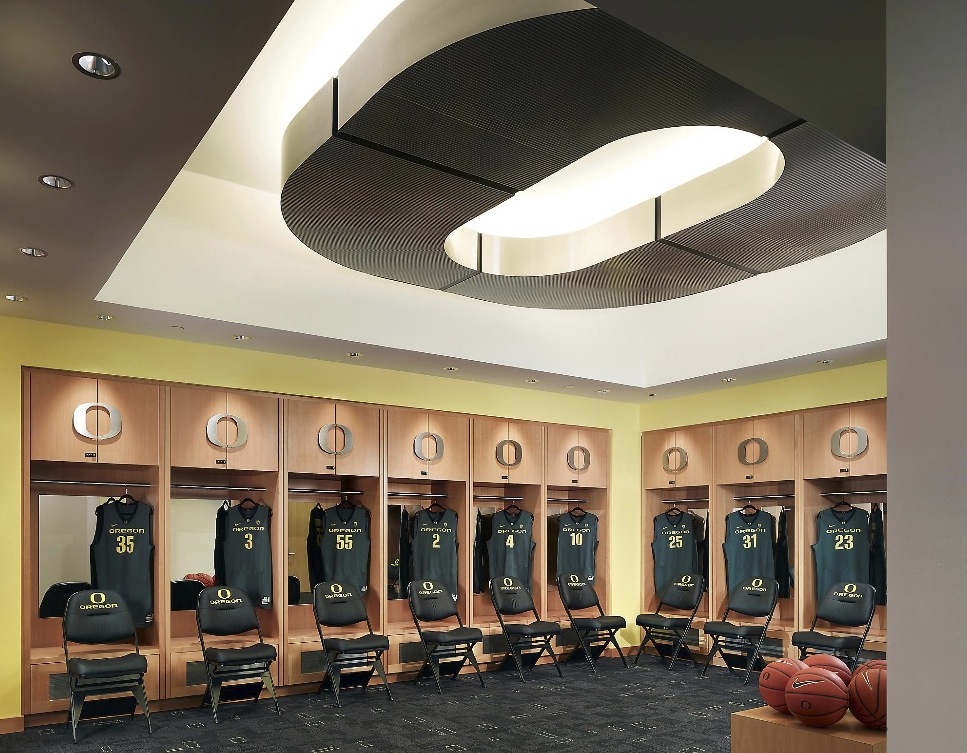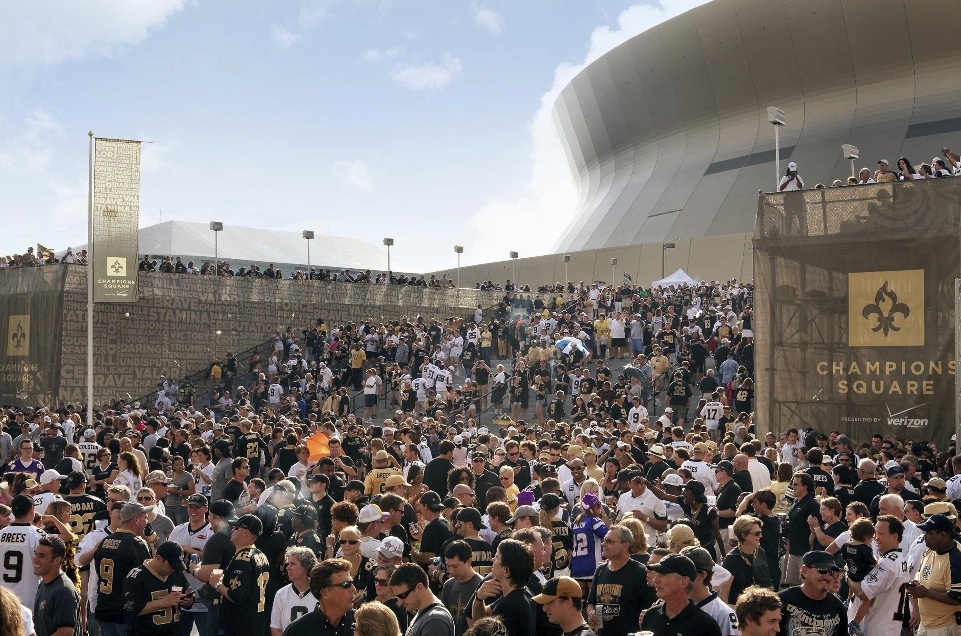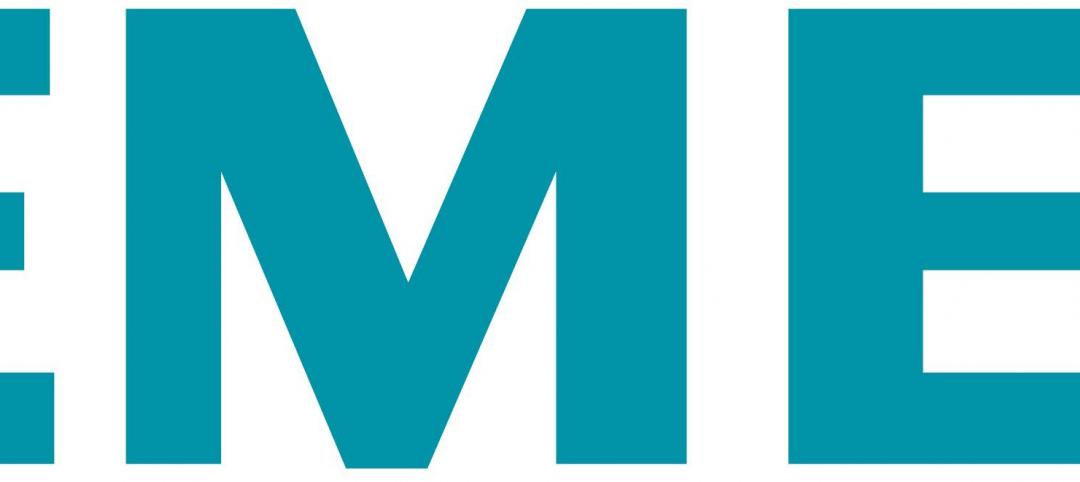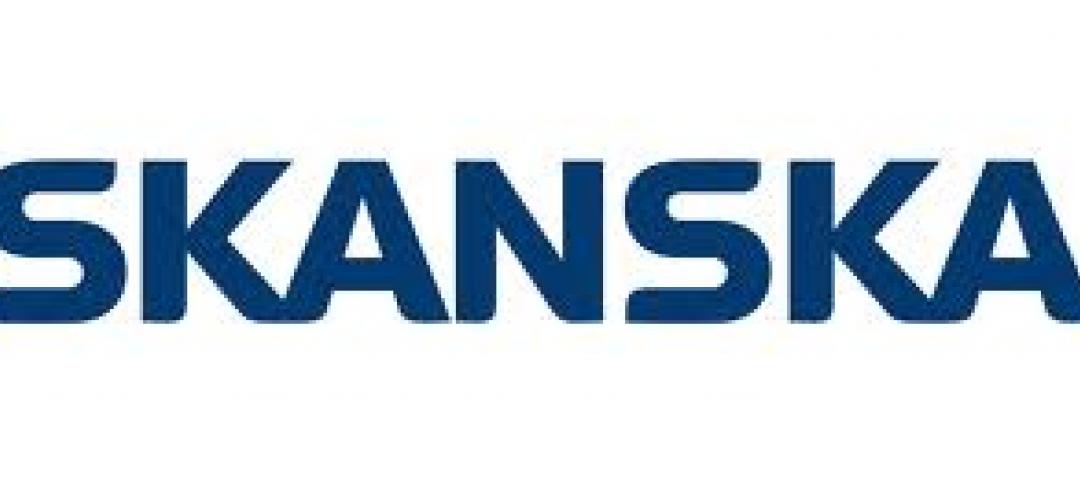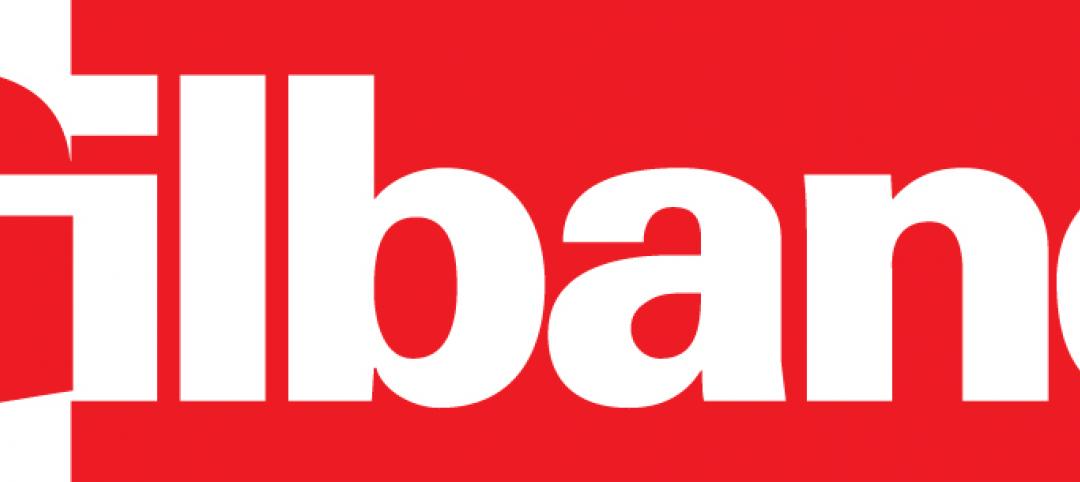When sports teams travel to a game, they battle fatigue, strange surroundings, and thousands of hostile, roaring fans. The home team meanwhile, rested, confident in their city and familiar with the facility, rides the fan energy that rocks their building when they step onto the field or court.
Home advantage can play a significant role in game outcomes. Players talk about it, coaches plan for it, Vegas odds makers calculate it. Team owners even ask architects to maximize it.
Here are six ways AEC firms can help create the conditions that draw big crowds, energize the home team to perform better, and disrupt visiting players:
1. Bring the fans in close
The closer the fans are, the more the players hear the noise, see the enthusiasm, and feel the energy. Venues can be designed to place stands as close to the court or field as possible, and steep-pitched seating bowls can bring the back rows closer to the action. The result: home teams feel the energy of the crowd as an extra player, while visiting teams must battle the added aural and visual distraction.
At JELD-WEN Field, seating extends to within fifteen feet of the pitch, and many fans stand and cheer virtually the entire game. After the Timbers’ home opener victory, head coach John Spencer said, “I don’t think you’ve seen an atmosphere like that in American soccer history. Ever. I think it was tremendous.”
2. Make it loud
Acoustic design maximizes the crowd’s ability to drown the opposing team in roaring noise, disrupt their communication and intimidate them. CenturyLink Field, home of the NFL Seattle Seahawks, has been dubbed the “loudest stadium in the NFL” thanks to a design that focuses crowd noise onto the field.
Foot stomping on the steel stands has been recorded by seismographs at comparable levels to a mini-earthquake. Over a 10-year period, there were 143 false-start penalties on visiting teams in Seattle, the most of any open-air stadium. During the home opener against the San Francisco 49ers on September 15, 2013, CenturyLink will be the site of an attempt sponsored by a fan group to break the Guinness World Record for loudest stadium crowd.
3. Make it easy to get there
How easily fans can travel to a venue is a big factor in filling the seats. Placing the venue in a centralized location well served by mass transit makes it more accessible. Brooklyn’s new sports and entertainment destination, Barclays Center, is one of the few urban venues in the U.S. with no dedicated parking. Instead, the arena can be reached by 11 subway lines, the Long Island Rail Road, and 11 bus lines. In their first season at Barclays Center, the Brooklyn Nets traded years at the isolated, and largely empty, Meadowlands Arena (and a two-year stint in Newark) for a packed house in a hot spot—and their first winning season in seven years.
In downtown Portland, Oregon, JELD-WEN Field, home of the MLS Portland Timbers, also has no dedicated parking, but receives extra service from the local metro system on game days. To sweeten the deal, season tickets—which have sold out every year since the renovated stadium opened and have a waiting list of thousands—include a transit pass.
4. Make it the place to be
More people in the building means more energy. Barclays Center demonstrates the difference between a typical sporting venue and an urban focal point where sports are the anchoring attraction. Home to the NBA Brooklyn Nets and soon the NHL New York Islanders, Barclays Center was designed to include amenities that broaden the appeal — four bar-lounges, three clubs, and the 40/40 CLUB & Restaurant by American Express make the venue a hotspot for nightlife and keep the place buzzing with celebrities and fans. In the Nets’ first season in the new facility, ticket sales increased 23 percent over the previous year, jumping from dead last over half of the teams in the league.
5. Make the home team feel at home
The quality of team amenities like locker rooms and training facilities makes a big difference in a team’s morale and self-image, which players carry into the field and into every play. Ultra-modern technology, high-end design finishes, and institutional identity imagery all contribute to athletes’ sense of belonging—in a facility, in a tradition, and in contention for their league’s highest honors. When the University of Oregon created the Matthew Knight Arena to replace a legendary basketball temple, it was critical that the facility modernize to the utmost while embodying the legacy of the previous building and the Ducks.
6. Get people excited
Venues that combine iconic architecture, local flavor and active public spaces give fans a stronger sense of connection and excitement. The dramatic post-Hurricane Katrina restoration of the Louisiana (now Mercedes-Benz) Superdome in New Orleans forever connected city and venue, building a reputation as one of the toughest away-game locations in the NFL. In 2010 the owners went a step further, adding Champions Square, a new public space conceived as the venue’s “front porch.” Designed in the tradition of New Orleans’ famous public squares, Champion Square hosts concerts prior to games, with the street festival atmosphere brewing excitement until fans fill the stadium and create what has been called the best home field advantage in the NFL.
Related Stories
| Jan 6, 2012
Doug Wignall named president of HDR Architecture
HDR Architecture, Inc. is known for its award-winning designs for urban environments, campuses and buildings in the healthcare, science and technology, civic, justice and higher education markets.
| Jan 6, 2012
Gensler unveils restoration and expansion of Houston's Julia Ideson building
The "new" building will serve as a repository of Houston memorabilia and rare archival material as well as the city's official reception space and a venue for exhibits, meetings and other special events.
| Jan 6, 2012
New Walgreen's represents an architectural departure
The structure's exterior is a major departure from the corporate image of a traditional Walgreens design.
| Jan 6, 2012
Summit Design+Build completes Park Place in Illinois
Summit was responsible for the complete gut and renovation of the former auto repair shop which required the partial demolition of the existing building, while maintaining the integrity of the original 100 year-old structure, and significant re-grading and landscaping of the site.
| Jan 4, 2012
Siemens acquires Pace Global Energy Services
Acquisition will enhance portfolio with new energy consulting and management services.
| Jan 4, 2012
Shawmut Design & Construction awarded dorm renovations at Brown University
Construction is scheduled to begin in June 2012, and will be completed by December 2012.
| Jan 4, 2012
Skanska acquires Industrial Contractors
Industrial Contractors Inc. is a contractor in the commercial, industrial and power markets of the Midwest. The company employs 2,400 people and in 2011 the revenues are estimated to be approximately $500 million.
| Jan 4, 2012
HDR to design North America’s first fully digital hospital
Humber River is the first hospital in North America to fully integrate and automate all of its processes; everything is done digitally.
| Jan 4, 2012
New LEED Silver complex provides space for education and research
The academic-style facility supports education/training and research functions, and contains classrooms, auditoriums, laboratories, administrative offices and library facilities, as well as spaces for operating highly sophisticated training equipment.
| Jan 3, 2012
Gilbane awarded $88M Contract for Ohio elementary school construction
The new award, which comprises the construction of five new elementary schools and demolition of 11 older facilities, is the latest K-12 building program managed by Gilbane for the Ohio School Facilities Commission since 1998.


